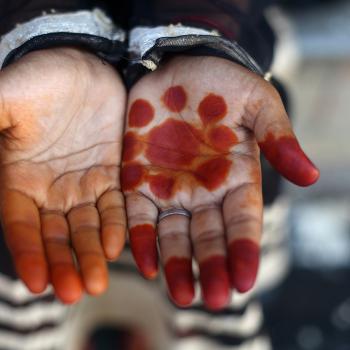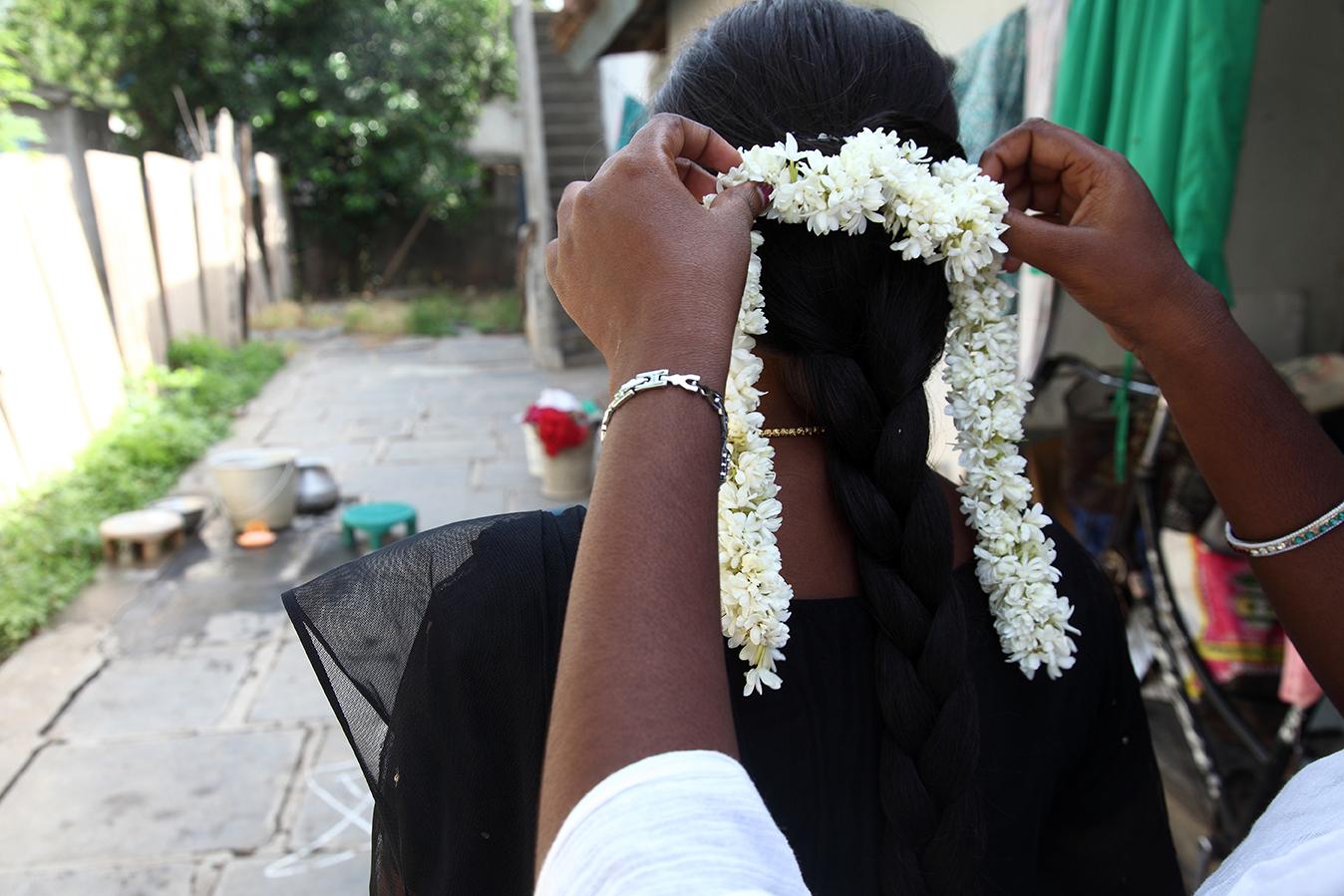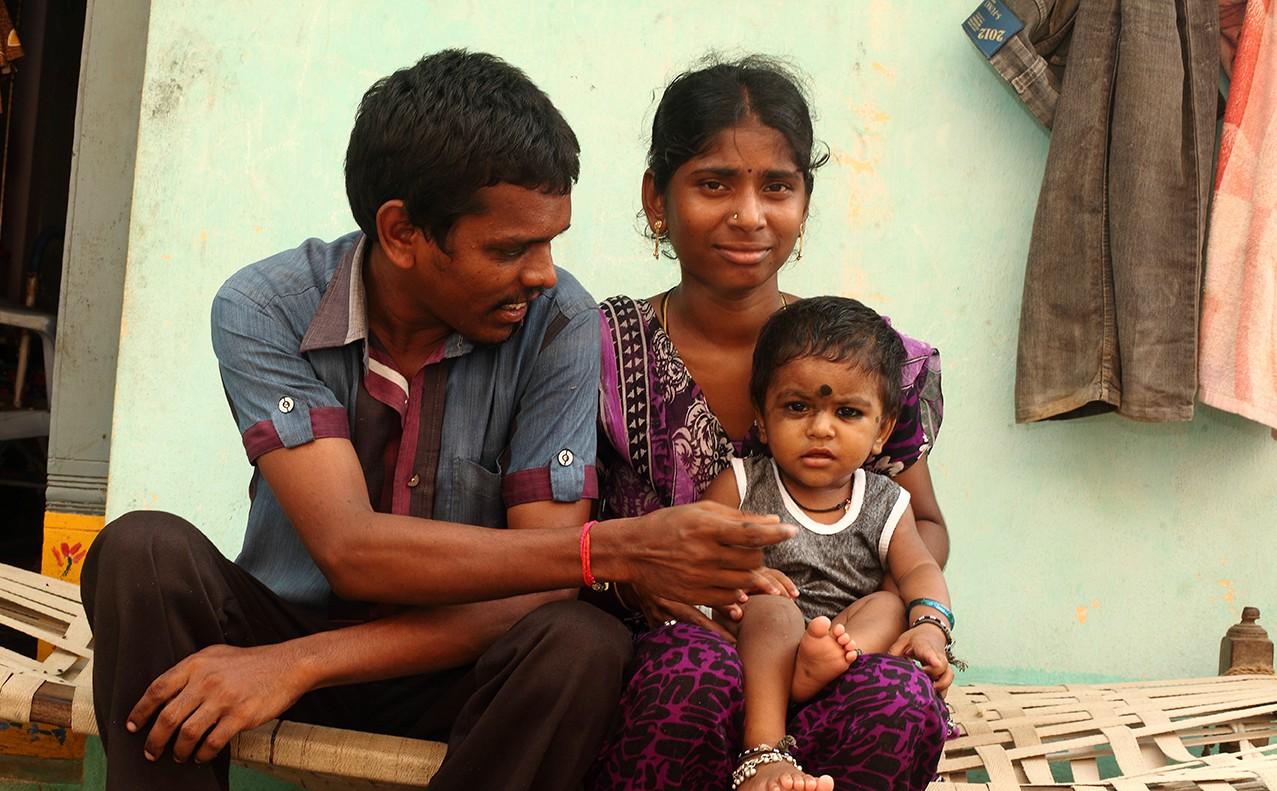
Over recent months I've listened to a striking number of conference presentations challenging the normative approach to child marriage and teenage parenthood. Most have encouraged us (as researchers) to look beyond framings of these practices as uniformly detrimental and to recognise their diversity across different contexts.
At Young Lives’ Adolescence, Youth and Gender conference, Gillian Mann presented findings from her recent work in Zambia which questioned many commonly held stereotypes; practices in their study sites were not monolithic (they found six different ‘types’ of child marriage), child marriages commonly took place amongst peers (rather than between girls and adult men), and children were often making their own decisions to marry without seeking parental consent. She also highlighted the importance of examining why we are concerned about child marriage - whether it is the marriage itself that is the problem, the factors which lead children into marriage, or the consequences arising from it? And are these problems only experienced by those young people who get married below 18?
At the Development Studies Association conference, Virginia Morrow asked us to reflect more critically on assumptions about children and youth that originate in the global North (including with regards to child marriage and teenage motherhood), which are then ‘uncritically exported to the global South’. Francesca Salvi discussed the ‘global tendency to see education and pregnancy as oppositional’, a framing that in Mozambique was leading pregnant schoolgirls to leave school early, and Brenda Rodriguez called for more recognition that much of the ‘shame, discrimination and stigmatisation’ that young mothers in Mexico face is due to the construction of teenage motherhood as inherently negative, and that more effort must be made to ‘give voice and listen to teenage mothers [themselves] instead’.
Young Lives has recently made its own contributions to the growing research literature about child marriage and early childbearing in Andhra Pradesh and Telangana, India, including Singh and Vennam 2016; Singh and Espinoza 2016; Winter and Nambiath 2016; and my new policy paper ‘Child Marriage and Early Child-bearing in India: Risk Factors and Policy Implications’. Rates of child marriage have been declining across India over the past two decades, but with increasing population size, absolute numbers are expected to rise in the coming years. In Andhra Pradesh and Telangana, Young Lives found that it is common for girls to be excluded from decisions about when and who they marry, and many experience grave consequences from marrying and giving birth at a young age. There is thus (justifiably) substantial policy and research attention directed at preventing child marriages in the region, and much has already been written about the drivers of child marriage in this context.

However, our data reveal a complex picture, with some aspects consistent with more normative framings of child marriage and teenage parenthood, and others potentially challenging them and/or requiring further exploration. More girls (and boys) are marrying later – of the Young Lives sample of girls who were married by 20 years old, around 5% were married by age 13, whilst over 40% were married at ages 16 and 17. The risks faced by those married at 13 are likely to be very different than for those married at 17, but there is little attention to the diversity of married young people’s needs and interests at different stages of the life course.
There is also little focus on how norms and societal contexts are changing and who they are changing for. Some girls, for instance, are increasingly able to continue in education for longer and delay their marriage, whilst many others have been forced to leave school prematurely because of economic (and other) constraints. For a small number, marriage can sometimes offer an opportunity to continue in education where there is agreement and financial support from their husbands and in-laws. Less is also known about what happens to adolescent girls and boys once they are married, once they have children – what challenges do they face and what support do they need? Studies of sexual and reproductive health have predominantly focused on the needs of unmarried adolescent girls and adult women – married adolescent girls and boys have largely been overlooked.
Young Lives Oxford and India research teams have recently been working together to design a new qualitative study, intending to speak to married and unmarried adolescents about their role in decision-making around marriage and fertility as well as their needs, choices and experiences pertaining to sexual and reproductive health and parenthood in Andhra Pradesh and Telangana. Rather than assuming normative constructions, we want to explore with unmarried and married adolescents, young mothers and young fathers their own hopes, expectations and realities of marriage and parenthood, and the needs and support they experience in their transitions to adulthood.

We piloted the tools earlier in this month and the (small amount of) data gathered reinforced the importance of studies such as this for exploring and addressing our assumptions about child marriage and teenage parenthood. One girl explained, for example, that her marriage (at 17) offered her security, and though she had left school just before marrying, financial constraints meant that she would not have been able to continue her studies even if she had remained unmarried. Now that she has had a (male) baby, she has the opportunity to return to education with the support of her husband and natal family.
As our researchers explained, there is a popular local saying: “a marriage is not between two people but between two families” and this can be both positive and negative - it can mean constraints on girls’ and boys’ individual agency in marital, fertility and household decision-making, but such strong social networks can also provide substantial support to young men and women, including in helping them to achieve their individual ambitions. Similarly, with this piece of research, we expect to find that few young people’s experiences of marriage – just like any marriage anywhere - will be wholly positive or wholly negative.
Experiences are likely to be diverse across different stages of the early life-course and, for many, the acts of marrying or giving birth in themselves may not be their chief concerns, instead forming part of a wider network of interconnected challenges, obstacles and constraints, as well as sources of security and wellbeing.

Over recent months I've listened to a striking number of conference presentations challenging the normative approach to child marriage and teenage parenthood. Most have encouraged us (as researchers) to look beyond framings of these practices as uniformly detrimental and to recognise their diversity across different contexts.
At Young Lives’ Adolescence, Youth and Gender conference, Gillian Mann presented findings from her recent work in Zambia which questioned many commonly held stereotypes; practices in their study sites were not monolithic (they found six different ‘types’ of child marriage), child marriages commonly took place amongst peers (rather than between girls and adult men), and children were often making their own decisions to marry without seeking parental consent. She also highlighted the importance of examining why we are concerned about child marriage - whether it is the marriage itself that is the problem, the factors which lead children into marriage, or the consequences arising from it? And are these problems only experienced by those young people who get married below 18?
At the Development Studies Association conference, Virginia Morrow asked us to reflect more critically on assumptions about children and youth that originate in the global North (including with regards to child marriage and teenage motherhood), which are then ‘uncritically exported to the global South’. Francesca Salvi discussed the ‘global tendency to see education and pregnancy as oppositional’, a framing that in Mozambique was leading pregnant schoolgirls to leave school early, and Brenda Rodriguez called for more recognition that much of the ‘shame, discrimination and stigmatisation’ that young mothers in Mexico face is due to the construction of teenage motherhood as inherently negative, and that more effort must be made to ‘give voice and listen to teenage mothers [themselves] instead’.
Young Lives has recently made its own contributions to the growing research literature about child marriage and early childbearing in Andhra Pradesh and Telangana, India, including Singh and Vennam 2016; Singh and Espinoza 2016; Winter and Nambiath 2016; and my new policy paper ‘Child Marriage and Early Child-bearing in India: Risk Factors and Policy Implications’. Rates of child marriage have been declining across India over the past two decades, but with increasing population size, absolute numbers are expected to rise in the coming years. In Andhra Pradesh and Telangana, Young Lives found that it is common for girls to be excluded from decisions about when and who they marry, and many experience grave consequences from marrying and giving birth at a young age. There is thus (justifiably) substantial policy and research attention directed at preventing child marriages in the region, and much has already been written about the drivers of child marriage in this context.

However, our data reveal a complex picture, with some aspects consistent with more normative framings of child marriage and teenage parenthood, and others potentially challenging them and/or requiring further exploration. More girls (and boys) are marrying later – of the Young Lives sample of girls who were married by 20 years old, around 5% were married by age 13, whilst over 40% were married at ages 16 and 17. The risks faced by those married at 13 are likely to be very different than for those married at 17, but there is little attention to the diversity of married young people’s needs and interests at different stages of the life course.
There is also little focus on how norms and societal contexts are changing and who they are changing for. Some girls, for instance, are increasingly able to continue in education for longer and delay their marriage, whilst many others have been forced to leave school prematurely because of economic (and other) constraints. For a small number, marriage can sometimes offer an opportunity to continue in education where there is agreement and financial support from their husbands and in-laws. Less is also known about what happens to adolescent girls and boys once they are married, once they have children – what challenges do they face and what support do they need? Studies of sexual and reproductive health have predominantly focused on the needs of unmarried adolescent girls and adult women – married adolescent girls and boys have largely been overlooked.
Young Lives Oxford and India research teams have recently been working together to design a new qualitative study, intending to speak to married and unmarried adolescents about their role in decision-making around marriage and fertility as well as their needs, choices and experiences pertaining to sexual and reproductive health and parenthood in Andhra Pradesh and Telangana. Rather than assuming normative constructions, we want to explore with unmarried and married adolescents, young mothers and young fathers their own hopes, expectations and realities of marriage and parenthood, and the needs and support they experience in their transitions to adulthood.

We piloted the tools earlier in this month and the (small amount of) data gathered reinforced the importance of studies such as this for exploring and addressing our assumptions about child marriage and teenage parenthood. One girl explained, for example, that her marriage (at 17) offered her security, and though she had left school just before marrying, financial constraints meant that she would not have been able to continue her studies even if she had remained unmarried. Now that she has had a (male) baby, she has the opportunity to return to education with the support of her husband and natal family.
As our researchers explained, there is a popular local saying: “a marriage is not between two people but between two families” and this can be both positive and negative - it can mean constraints on girls’ and boys’ individual agency in marital, fertility and household decision-making, but such strong social networks can also provide substantial support to young men and women, including in helping them to achieve their individual ambitions. Similarly, with this piece of research, we expect to find that few young people’s experiences of marriage – just like any marriage anywhere - will be wholly positive or wholly negative.
Experiences are likely to be diverse across different stages of the early life-course and, for many, the acts of marrying or giving birth in themselves may not be their chief concerns, instead forming part of a wider network of interconnected challenges, obstacles and constraints, as well as sources of security and wellbeing.

